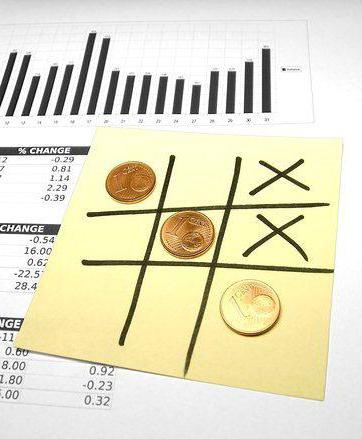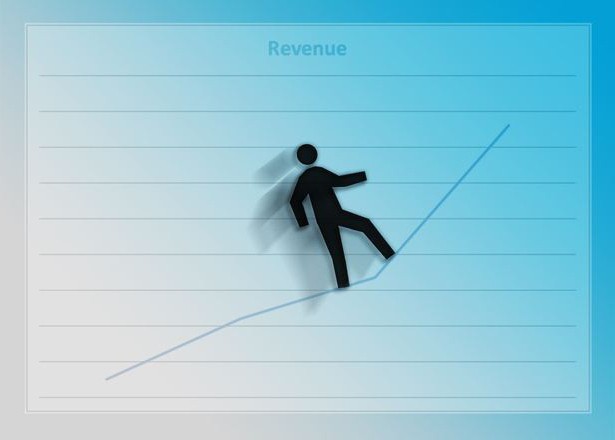In the normal functioning of the organization after payment of all expenses and tax obligations remains a certain amount of money. This retained earnings is usually reinvested in the organization. Owners decide how the funds will be used in the future.
Profit
The main indicator of the enterprise is the change in the cost of capital. It is displayed on account 99 "Profit and loss." Losses are recorded for DT, and revenues for CT. A comparison of the results forms the financial result of the organization.

Let's look at an example.
The turnover of account 99 for the 1st quarter amounted to: 10,000 rubles. for diesel fuel and 12.5 thousand rubles. by CT. The final balance is calculated by the formula:
The balance at the beginning of the period + CT Turnovers - DT Turnovers = 0 + 12.5 - 10 = 2.5 thousand rubles.
Movement for the 2nd quarter: for diesel fuel - 15 thousand rubles, for CT - 13.5 thousand rubles.
Balance = 2.5 + 13.5 - 15 = 1000 rubles.
In the same way, retained earnings for the whole year are calculated.
The financial result includes income from all ordinary activities and emergencies. The bulk of the funds the company receives from the sale of goods. The financial result is calculated as the difference between revenue, taxes paid and other expenses. The list of costs associated with production is regulated by law.
Formation
The financial result for the year is displayed in account 99 “Profit or loss”. The balance should be transferred by the last posting for the year to account 84 “Retained earnings (uncovered loss)”. Profit is generated by the record DT 99 KT 84, and the loss - DT 84 KT 99. In the next reporting year, owners can make decisions regarding the distribution of these funds. So the accounting of retained earnings is carried out.

The direction of part of the income for the payment of dividends, intermediate income is reflected in the record DT 84 KT 75 "Settlements with shareholders". The loss of the organization can be written off due to the authorized (DT 80), reserve (DT 82) capital, earmarked contributions (DT 75), and income from previous years (DT 84). So is carried out reformation of balance. The remaining profit is used for self-financing of the organization. For a more detailed display of the movement of funds, sub-accounts are used: 84.1 "Received income", 84.2 "Retained earnings", 84.3 "Used funds", 84.4 "Loss".
Example
At the meeting of shareholders, it was decided to direct the accumulated funds to pay income to the founders, replenish reserve capital and cover losses from previous periods. These operations are displayed in the control unit by the following transactions:
- DT84.1 KT75.2 - payment of income.
- DT84.1 KT82 - replenishment of the reserve fund.
- DT84.1 KT84.4 - loss coverage.

Reporting
Retained earnings in the balance sheet are:
1) in quarterly reporting:
- account balance 99 "profit and loss" plus / minus;
- account balance 84 “retained earnings (uncovered loss)” minus;
- account balance 84 “retained earnings (uncovered loss)” (in terms of interim dividends accrued in the reporting period);
2) in the annual accounts: score 84.
If the company did not have a financial result for previous years or intermediate accrued income of the owners, then the value of lines 1370 of the balance sheet and 2400 of form No. 2 are the same.
Sometimes the organization in the inter-reporting period is forced to adjust the balance sheet. The balance can be changed due to the revaluation cost of intangible assets, fixed assets, if the period of use is specified, the method of calculating depreciation, if there are changes in legislation or accounting policies. Thus, the actual and retained earnings in the balance sheet are two different concepts.
Revenue for previous periods
Retained earnings of past years can be directed to goals defined by the charter or meeting of participants:
- increase in equity;
- repayment of past losses;
- dividend payment;
- production goals;
- formation of a reserve fund, special purpose fund, etc.
The capital of the organization is its own, incremental and accumulated. The latter is formed at the expense of profit. That is, income from past periods is displayed in the balance sheet, but in fact, these funds can be in circulation. The accounting for retained earnings of previous years is also displayed in account 84.

Postings
The financial result is accumulating cumulatively for 12 months. With these funds taxes and fees are paid first, then the funds provided for by the charter are formed. The rest of the amount is net profit. It is refinanced or directed to meet the needs of the organization. Consider the standard records that are formed in correspondence with account 84 “Retained earnings”. Postings:
- DT84 KT51 - part of the expenses paid due to net profit.
- DT84 KT70 - employee bonus paid.
- DT84 KT80 (83) - the amount of the authorized (additional) capital has been increased.
- DT73 KT84 - loss coverage from employee contributions.
- DT80 KT84 - the authorized capital has been changed to the value of net assets.
Dividend payment
The approval of annual reports is carried out by the meeting of shareholders. It also decides on the use of the proceeds. Only after this information is displayed on the analytical accounts and in the financial statements.
The decision on the payment of dividends and their amount is also taken by the board of directors. Owners receive income once every 3, 6 or 12 months. The legislation provides for cases when an organization does not have the right to pay dividends:
• the entire authorized capital has not been contributed;
• shares were not repurchased;
• the organization is declared bankrupt;
• the volume of net assets of the company is less equity.
When accruing dividends, an obligation arises to pay income tax. The amount of dividends of individuals is additionally taxed by personal income tax. Withholding taxes from legal entities is displayed by posting DT75 KT68. Dividends are accrued by recording DT84 KT70 “Settlements with personnel”. Payment of income to owners: DT 75 (70) KT 50 “Cashier” (51, 52).

No interest is accrued on unpaid dividends. Non-received amounts are accounted for as part of other JSC revenues: DT 75 (76) KT 91.
Reserve capital
For financing losses, redemption of bonds, redemption of own securities, JSC create a special fund. Its minimum size is 5% of the share capital. The law provides for an annual transfer of funds in the amount of 5% of net profit. As in the case of Article 84 “Retained earnings”, account 82 “Reserve capital” is passive. That is, a decrease in the amount of funds is displayed on the debit, and an increase on the loan. Consider typical wiring:
- DT84 KT82 - the formation of the fund.
- DT82 KT84 - write-off of loss.
- DT82 KT66 (67) - redemption of bonds.
- DT84 KT84 - covering the debts of past years.
Property acquisition
Retained earnings may be used to purchase intangible assets. In this case, only the line of assets will change in the balance sheet. The amount of funds in the liability will remain the same, since the movement of money will be displayed on sub-accounts, and the final figure will not change.

Production development
If, after the formation of the fund, the owner withdraws the remaining part of the profit, then there is a simple reproduction. If shareholders decide to reinvest, this is expanded reproduction. In the second case, income for the reporting period is added to the financial results for previous years: DT 84 subch. “Profit of the reporting period”, CT 84 subaccount. "Profit over the past years."
Other goals
AO may direct net profit to pay:
- awards to managers according to the results of work;
- material assistance;
- charitable gatherings;
- organization of leisure.
Any such decision is discussed at a meeting of shareholders and recorded in the relevant act. Only after that are postings in accounting formed. The document is prepared at the end of December, and entries in the balance sheet are formed in January.
Examples
The company sold fixed assets for 98,000 rubles, including VAT - 14,945 thousand rubles. Him book value - 92,765.36 rubles; the amount of accrued depreciation - 39,611.20 rubles. The facility was revalued at 18,823.55 rubles. The transaction took place on 05.15, funds were received on 05.17. The following entries have been generated in the control unit:
| Operation | Debit | Credit | Amount, rub. |
| 15.05 | |||
| Written off depreciation | 02 | 01 | 39 611,20 |
| Residual value accounted (92765.36 - 39611.20) | 91-2 | 01 | 53 154,16 |
| Transaction income | 62 | 91-1 | 98 000 |
| VAT | 91-2 | 68 | 14 945 |
| Written off revaluation amount | 83 | 84 | 18 823,55 |
| 17.05 | |||
| Revenues from sales | 51 | 62 | 98 000 |
| 30.05 | |||
| Recognized profit from sales (98,000 - 14,945 - 53,154.16) | 91-9 | 99 | 29 900,84 |
Posting the write-off of the revaluation surplus to profit does not change the amount of equity, since these two items are in the same part of the balance sheet.
A participant in the LLC decided to replenish profits by 1,000 thousand rubles to increase net assets.
| Operation | Debit | Credit | Amount, thousand rubles |
| Part of the profit has been transferred to the current account | 51 | 75 | 1 000 |
| Retained earnings increased due to installment | 75 | 84 | 1 000 |
The organization made a profit of 250 thousand rubles. By the decision of the shareholders, 10% will be directed to replenish the reserve capital, and the rest - to pay dividends.
Shareholder employees owed 115 thousand rubles.
| Operation | Debit | Credit | Amount, thousand rubles |
| Profit taken into account | 99 | 84 | 250 |
| Reserve fund replenished | 84 | 82 | 25 |
| Dividends accrued to shareholders - employees | 84 | 70 | 115 |
| Dividends of other shareholders (250-25-115) | 84 | 75 | 110 |
That, in fact, is all that can be said about retained earnings. We hope the information was useful to you.








